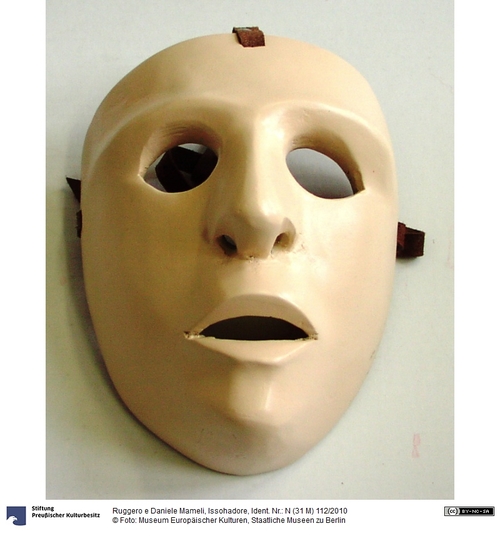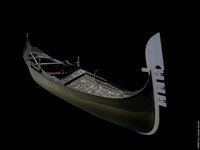Plastische Gesichtsmaske aus Erlenholz geschnitzt, weiß-cremefarben bemalt . Zur Befestigung am Hinterkopf sind Lederbänder mit Schnallen an der Maske befestigt. Innen ins Holz gebrannt:
"Mamuthones Mameli Mamoida 2008"
Die Masken werden traditionell auf der Insel Sardinien in der Stadt Mamoiada bei Riten im Jahresverlauf getragen. Die weiße Maske (Issohadore) trägt der Anführer, die schwarzen Masken die ihm folgenden Personen. Sie sind ein Teil einer kompletten Verkleidung.
en

